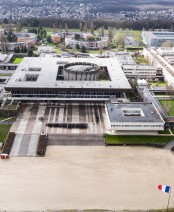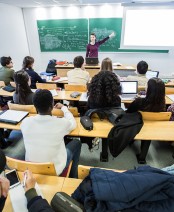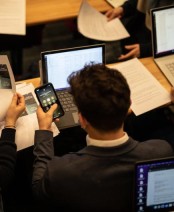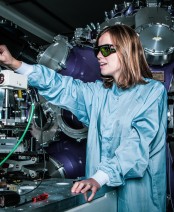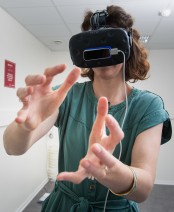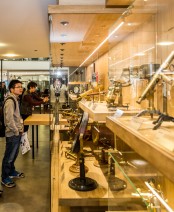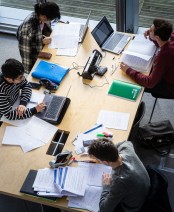The “Bonhomme d’Ampère” celebrates his two-century anniversary
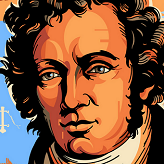
 Representation of the “Bonhomme d'Ampère” by André-Marie Ampère in 1820 (left). More recent interpretation of the Bonhomme (right).
Representation of the “Bonhomme d'Ampère” by André-Marie Ampère in 1820 (left). More recent interpretation of the Bonhomme (right).
When we speak about Ampère, we associate his name with electricity: the name André-Marie Ampère was given to the International Unit of Measurement of electrical intensity, as a tribute to the work of this great man. This year, the French Electricity, Electronics and Information and Communication Technology Society (SEE) and the Société des amis d'André-Marie Ampère (SAAMA) are honoring him for the 200th anniversary of the discovery of the laws of electrodynamics. École Polytechnique is also taking advantage of this anniversary to celebrate one of its illustrious professors who helped to solidify its reputation.
A self-taught scientist
André-Marie Ampère did not go to school because his father, a follower of Rousseau's ideas on education, who preferred to let him learn on his own. André-Marie sought to acquire all the knowledge of his time thanks to his father's library and in particular the Encyclopedia of Diderot and d'Alembert. A few years later, he taught mathematics and Italian, then chemistry and physics in Lyon. After a succession of family misfortunes, he decided to move to Paris and was appointed analysis tutor at École Polytechnique in 1804. The work he undertook on game theory led to his acceptance into the Académie des Sciences in 1814.
An experience full of surprises
On this very day, 200 years ago (September 18, 1820), André-Marie Ampère presented his first work on electrodynamics. These reflections are based on an experiment reported by another X alumni and professor: François Arago (X1803). On September 4, 1820, François Arago talks to the Academy about an experiment he discovered during the summer: the Oersted experiment.
Oersted's experiment: The principle is simple, you just have to place a wire over a compass needle. When the wire is connected to a battery (and therefore run by an electric current), the compass needle deflects. The Academy was, at that time, awestruck by this remote effect and Arago decides to reproduce the experiment during the next session on September 11, 1820.
The birth of the Bonhomme d'Ampère
For André-Marie, it is a true revelation, and in one week, he proposes a "new theory of the magnet" in which he links electric current and magnetism and thus lays the foundations of electromagnetism. He then defines a way to find the orientation of the compass needle:
"If we think in the direction of the current, so that it is directed from the feet to the head of the observer, and that the observer faces the needle, it is constantly to the left of the observer that the action of the current will move away from its ordinary position [the north pole of the needle]" (see pictures at the beginning of the article).
His intuition and the measuring instruments that he would later develop would allow his "successor" in the field, the physicist James Clerk Maxwell, to formalize the laws of electromagnetism a few years later. James Clerk Maxwell will thus refer to André-Marie Ampère as the “Newton of electricity”.
A multifaceted scientist
If this work on electricity is known thanks to the unit that bears his name, what is less well known is that André-Marie Ampère was equally interested in questions of chemistry (the Avogadro-Ampere law has kept a trace), but also in philosophy and religion. He thus invented several words that we know well, such as "current", "voltage", but also "cybernetics", "kinematics", or even "solenoid".
This day therefore celebrates one of the many facets of this great man whose imprint is still present in our daily lives: from the use of electricity that he helped to "tame", to our language in which his innovative scientific ideas have meddled with.
> More about André-Marie Ampère: https://ampere2020.fr/ampere-in-english/
> Ampère's research on electricity in video:
https://www.youtube.com/watch?v=x8BVwosjI1Y&feature=youtu.be
